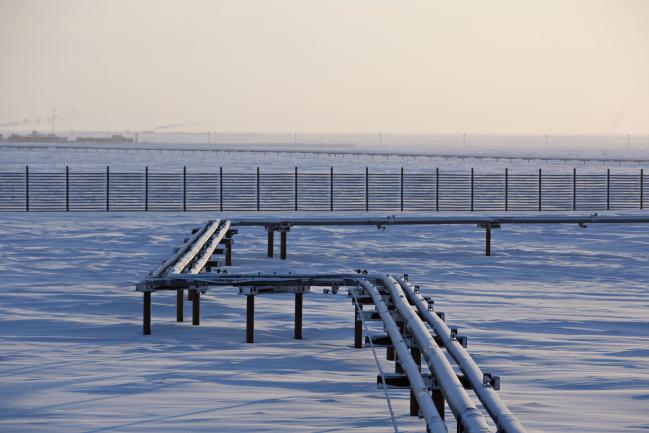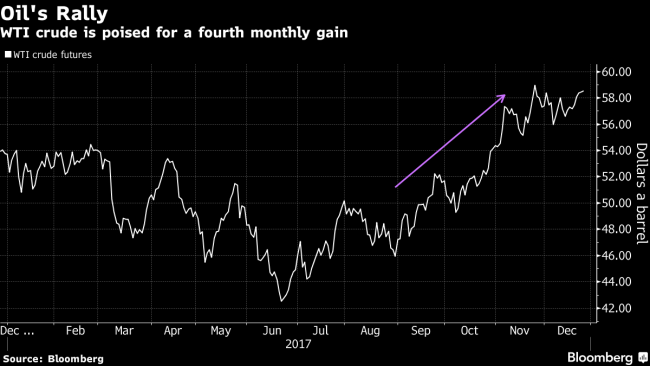(Bloomberg) -- A pipeline blast in Libya combined with a bullish Saudi budget forecast boosted crude prices to levels not seen since mid-2015.
Futures in New York and London touched the highest in more than two years after reports of an explosion at a pipeline operated by Waha Oil that carries crude to the Es Sider terminal in Libya. Waha output fell by 60,000-70,000 barrels a day, according to a person familiar with the situation. Meanwhile, Saudi Arabia is said to expect oil revenue to jump about 80 percent by 2023.
The blast is “certainly something of a set-back because Libya had been very steadily staying online,” said John Kilduff, a partner at Again Capital LLC, a New York-based hedge fund. “It’s just a reminder of the geopolitical risk premium that’s going to haunt this market all of next year.”
Waha production was at 260,000 barrels a day, said a person familiar with the situation. The explosion “is a big thing” that could push prices higher still amid a tighter supply picture, said Bob Yawger, director of futures at Mizuho Securities USA Inc. in New York.
At the same time, Saudi Arabia is said to expect its first budget surplus in a decade, according to people with knowledge of the matter. Under a six-year program to balance the budget, officials predict rising prices and expanded output will push income from oil sales to 801.4 billion riyals ($214 billion) from 440 billion riyals this year, the people said.
Oil is poised for a fourth straight monthly advance as the Organization of Petroleum Exporting Countries and its partners including Russia cut output and promise to continue doing so through the end of next year. In the U.S., the uptick in boosting the rig count has slowed. Oil rigs are holding at 747 with no rigs added last week, according to Baker Hughes data Friday.
West Texas Intermediate for February delivery advanced 97 cents to $59.44 a barrel at 11 a.m. on the New York Mercantile Exchange after earlier rising to as high as $59.55. Total volume traded was about 56 percent below the 100-day average.
Brent for February settlement climbed $1.15 to $66.40 a barrel on the London-based ICE Futures Europe exchange. The global benchmark crude traded at a premium of $6.95 to WTI.
Oil Prices in 2018: Again It’s All About U.S. Shale Output
As the year comes to a close, focus will also be on the restart of the Forties Pipeline System in the North Sea. Repairs of the pipeline at Red Moss, Scotland are now mechanically complete and a small number of customers are now sending oil and gas through the pipeline at low rates, the company said Monday. The pipeline should be back to normal rates early in the new year.
Even with the Forties Pipeline System working toward a restart, “the lost barrels have added up and we’re seeing some strength here as a result,” Kilduff said.
Oil-market news:
- Russia is keeping this year’s oil production at its 2016 level of about 10.98 million barrels a day as it complies with the OPEC deal to reduce output, Energy Minister Alexander Novak said on Rossiya 24 TV.

